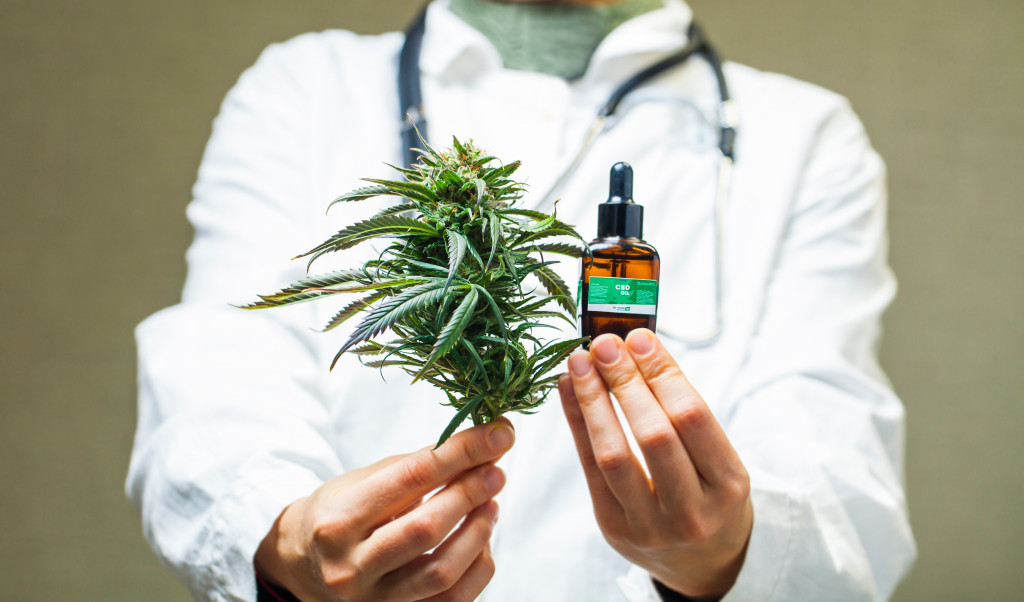Columbus, Ohio was shocked after a doctor was charged with 25 counts of murder for greenlighting massive doses of fentanyl that proved fatal to his patients. Such a case is not limited to Ohio, as fentanyl is overprescribed across all states. On the other hand, Ohio doctors are still reluctant to prescribe medical marijuana.
While medical marijuana has proven to be a safer alternative, the state limits its use to 21 medical conditions. Taboos and a former illegal drug classification have given marijuana a bad rap — however, the more accepted fentanyl is now one of the deadliest drugs in the U.S.
Fentanyl
A study by John Hopkins University, covering thousands of patients, noted that fentanyl was wrongfully prescribed to between a third to half of them. Fentanyl is supposed to be prescribed to cancer patients or individuals with high tolerance to opioid painkillers. One in five doctors were unaware of the restrictions of fentanyl use. Today, the drug is being used to treat lower back pain and even chronic headaches.
Extremely Dangerous
Fentanyl is 50-100 times more potent than morphine and vastly more dangerous. The difference between a proper and fatal dose is minimal. More than 30,000 people died in 2019 due to fentanyl, and the numbers are expected to double once 2020 reports come out. The medical community considers fentanyl to be safe — but only when used and properly monitored in a medical setting. Most cases of fentanyl overdoses in the U.S. are due to illegal made fentanyl — but cases involving prescribed fentanyl have almost doubled.
Fentanyl patches have proven dangerous, especially when unknowingly used by children. Medical malpractice lawsuits are becoming more common, especially with regard to senior patients. Fentanyl overdoses can lead to a shutdown of bodily functions marked by decreasing heart rate, lethargy, unconsciousness, coma, or death.
Highly Addictive
Like any opiate, fentanyl is highly addictive. Fentanyl users overwhelmingly develop physical dependence. Repeated use of fentanyl often results in higher tolerance to the drug, requiring progressively higher doses. Fentanyl addicts have been known to uncontrollably seek the drug, disregarding harmful or negative consequences. Withdrawal symptoms can appear within 12 hours of the last dose. Symptoms can last for more than a week — with people experiencing severe generalized pain, vomiting, chills, anxiety, and agitation.

Marijuana
Depending on the state, marijuana could have widespread or minimal use. In Ohio, medical marijuana is limited to 21 conditions, and doctors are wary of prescribing it. Only 650 doctors in the state have the certificates to recommend marijuana — less than 2 percent of the state’s active physicians. Most patients are unaware or uncomfortable with marijuana, especially with the additional requirements for its use. In 2018, Ohio doctors founded the Ohio Medical Marijuana Physicians Association.
The group aims to spread awareness of alternative treatments, share their experiences, as well as support other doctors who may want certification. Marijuana is still illegal at the federal level — minimizing research as well as available data that doctors can tap into to reassure their patients.
Minimal Risks
Marijuana has little to no serious side effects. Overdoses are rare and non-fatal, with the worse cases limited to bouts of agitation, paranoia, and hallucination. Marijuana can affect the brain causing lapses in memory and attention. It increases reaction times while limiting coordination as well as the capacity to learn while under its effects. The most serious consequences of marijuana use are largely inconsequential to most medical marijuana users.
Marijuana affects brain development, making it debilitative to younger individuals. Teenagers exposed to marijuana at an early age might develop symptoms similar to ADHD — however, adults (over 21) are unaffected. Like alcohol, marijuana shouldn’t be used while pregnant, as it is linked to behavioral and cognitive issues in children.
Slightly Addictive
Medical marijuana can be addictive — but not to the extent of opioids. Around 10 percent of marijuana users get addicted, but the number sheets up to 17 percent for individuals under 18. Marijuana users often crave the drug similar to how alcoholics crave alcohol. Withdrawal symptoms are limited to diminished appetite, mood changes, headaches, chills, and stomach problems.
The symptoms last for a day or two, with more severe addictions taking a week. Treatments usually don’t require in-house or outpatient procedures and are often done with minimal supervision.
Marijuana has a bad rap, but it is overwhelmingly safer than the overly prescribed fentanyl. Acceptance may be on the horizon, especially once Ohio doctors accept the benefits of the safer alternative.





